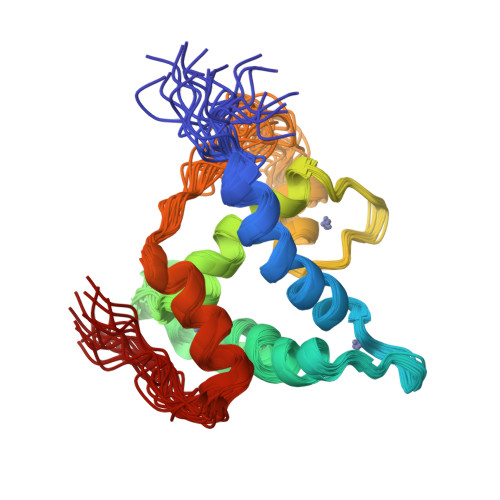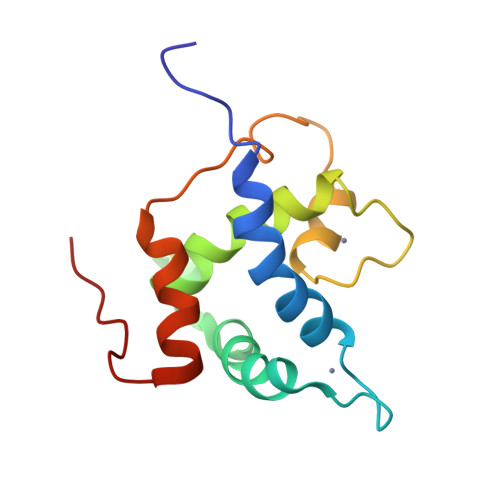Regulation of the Activity in the p53 Family Depends on the Organization of the Transactivation Domain.
Krauskopf, K., Gebel, J., Kazemi, S., Tuppi, M., Lohr, F., Schafer, B., Koch, J., Guntert, P., Dotsch, V., Kehrloesser, S.(2018) Structure 26: 1091-1100.e4
- PubMed: 30099987
- DOI: https://doi.org/10.1016/j.str.2018.05.013
- Primary Citation of Related Structures:
6FGN, 6FGS - PubMed Abstract:
Despite high sequence homology among the p53 family members, the regulation of their transactivation potential is based on strikingly different mechanisms. Previous studies revealed that the activity of TAp63α is regulated via an autoinhibitory mechanism that keeps inactive TAp63α in a dimeric conformation. While all p73 isoforms are constitutive tetramers, their basal activity is much lower compared with tetrameric TAp63. We show that the dimeric state of TAp63α not only reduces DNA binding affinity, but also suppresses interaction with the acetyltransferase p300. Exchange of the transactivation domains is sufficient to transfer the regulatory characteristics between p63 and p73. Structure determination of the transactivation domains of p63 and p73 in complex with the p300 Taz2 domain further revealed that, in contrast to p53 and p73, p63 has a single transactivation domain. Sequences essential for stabilizing the closed dimer of TAp63α have evolved into a second transactivation domain in p73 and p53.
Organizational Affiliation:
Institute of Biophysical Chemistry and Center for Biomolecular Magnetic Resonance, Goethe University, Frankfurt am Main, Germany.

















